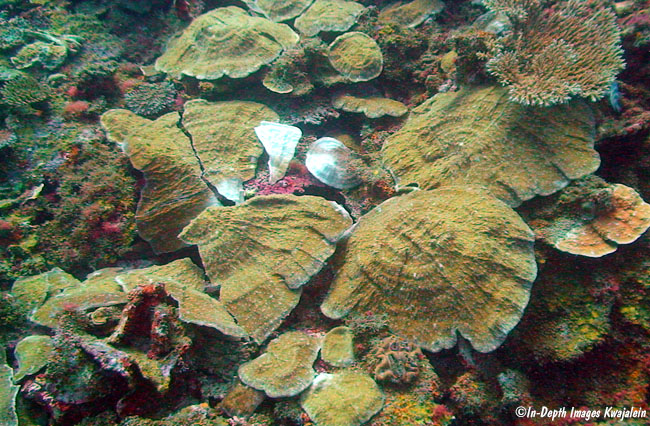
This species forms flattened, thin, very lightweight plates that easily break apart. Many of the plates probably exceed 40cm in diameter. The few times we have found this species, it has formed clusters of plates, probably all grown from an original single coral. The plates easily break naturally and regrow, allowing the "colony" to spread over several meters of deep lagoon bottom. We have seen it at depths of about 35-40m around the bases of some lagoon pinnacles, such as the one at T-Buoy. Rowlett's Indo-Pacific Corals figures what appears to be this as a form of H. pileus. It does look like and probably is that species, but the H. pileus we see in shallower water are much thicker and heavier and do not easily break apart. Still, the thin, flattened, fragile colonies we see below may be a growth adaptation to deeper, darker water.

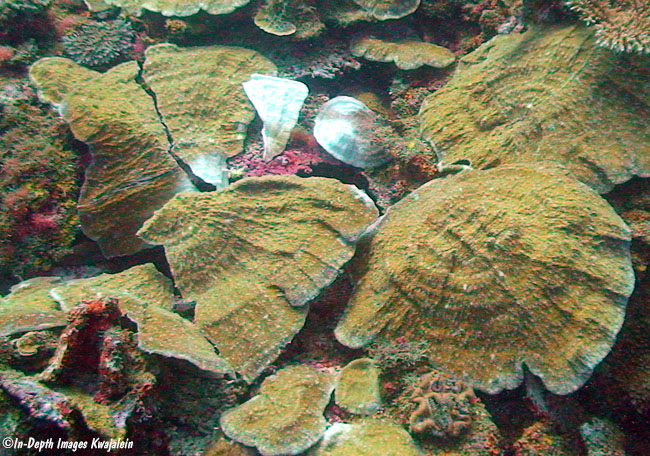
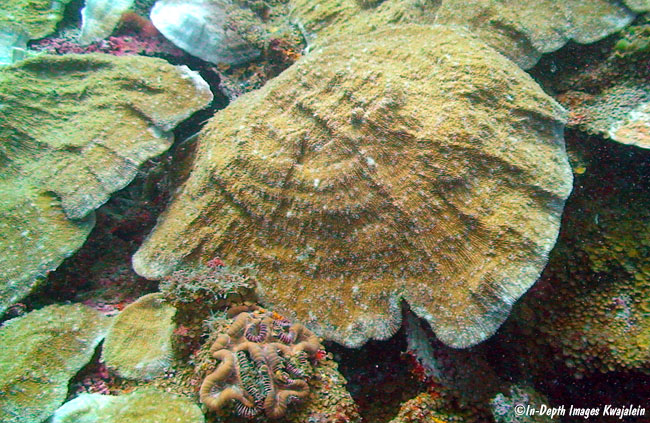
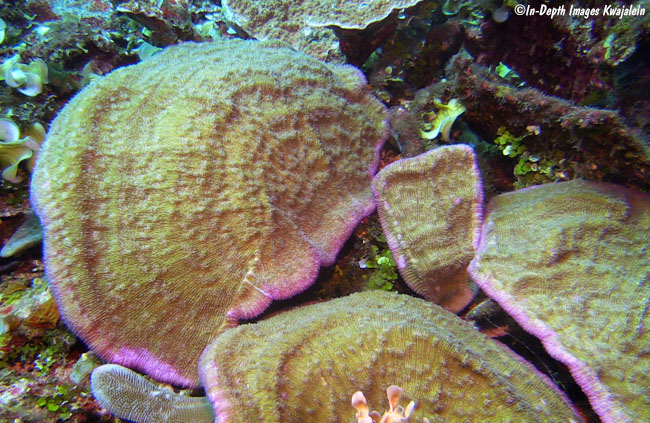
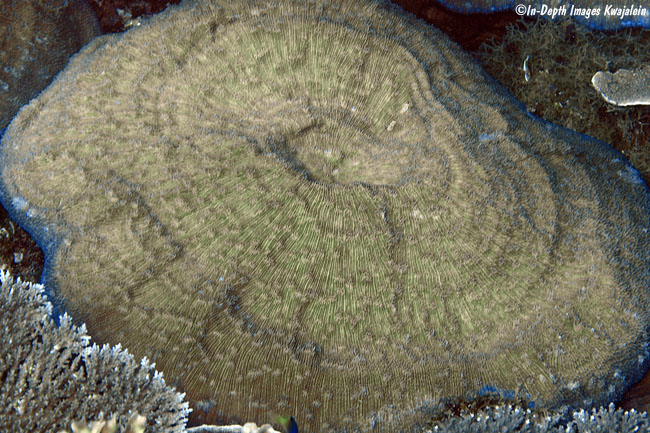
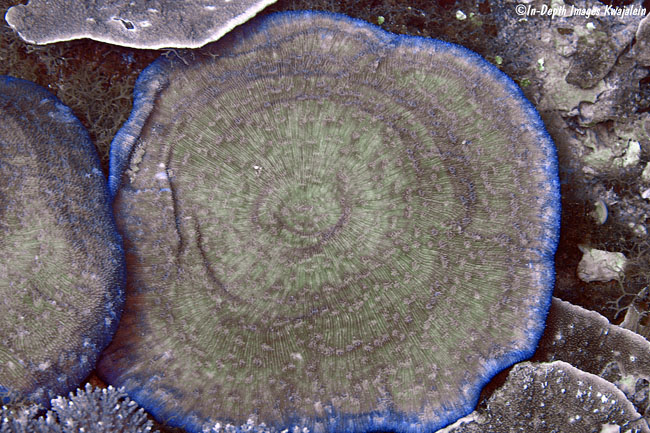
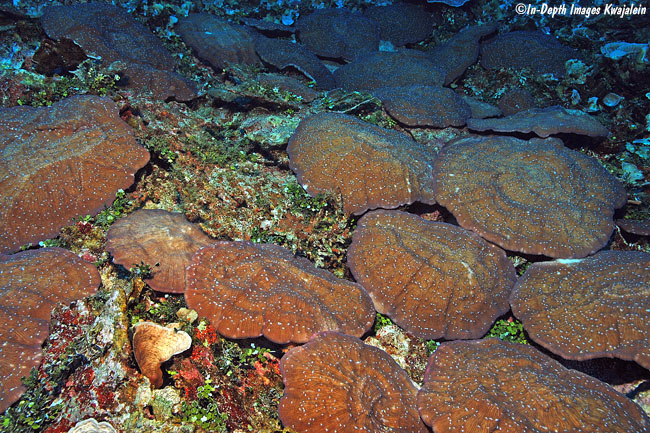
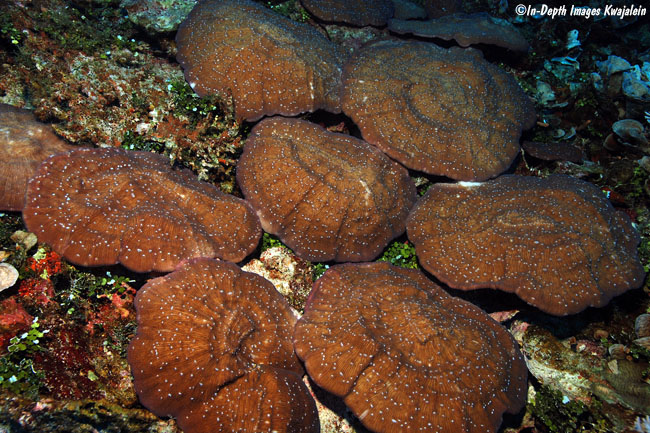
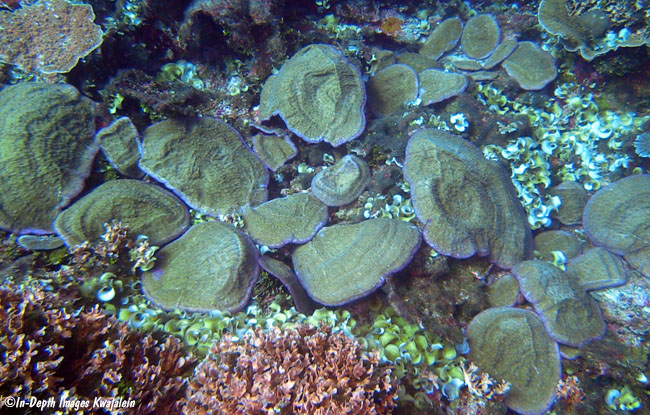

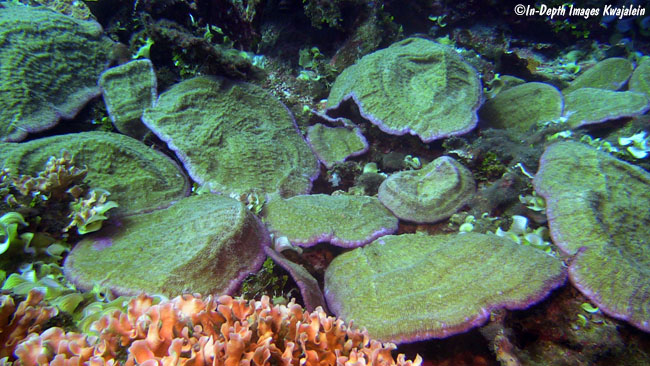
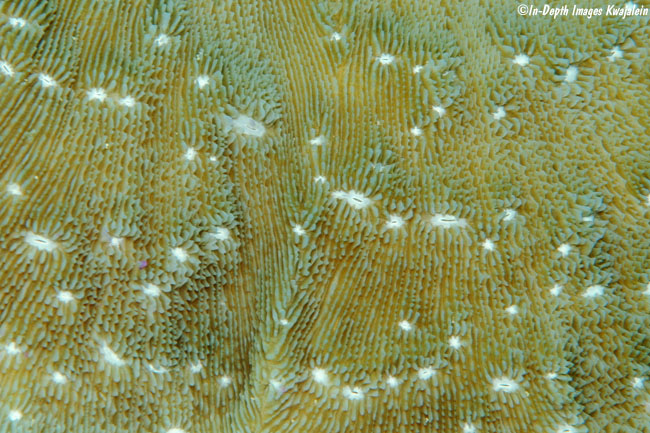
Created 10 April 2020
Updated 8 June 2023